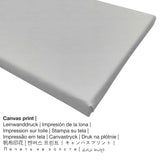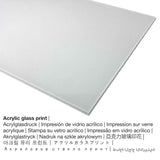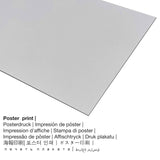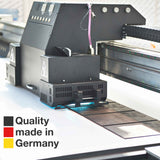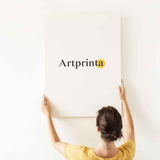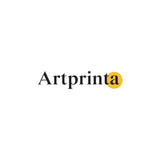Dirck Hals, 1628 - Nri oriri - mbipụta nka mara mma
Ụtụ gụnyere. Mbupu gbakọrọ na ndenye ọpụpụ.
Nchịkọta edemede
Oriri is an artpiece made by the baroque artist Dirck Hals. The version of the painting was made with the size: 16 x 26 in (40,6 x 66 cm). Mmanụ na osisi was used by the European painter as the technique for the masterpiece. It is included in the The Metropolitan Museum of Art's digital art collection, which is one of the world's largest and finest art museums, which includes more than two million works of art spanning five thousand years of world culture, from prehistory to the present and from every part of the globe.. The ngalaba ọha work of art is provided with courtesy of The Metropolitan Museum of Art, New York, Purchase, 1871. In addition to that, the artpiece has the following creditline: Ịzụta, 1871. N'elu nke ahụ, nhazi bụ odida obodo ma nwee oke nke 3: 2, nke pụtara na ogologo bụ 50% ogologo karịa obosara. Dirck Hals was a male painter, whose style was primarily Baroque. The Baroque painter lived for a total of 65 years - born in the year 1591 na Haarlem, North Holland, Netherlands wee nwụọ na 1656 na Haarlem, North Holland, Netherlands.
Họrọ ụdị ihe ebipụta nka
Anyị na-enye ụdị dị iche iche nha na ihe maka ngwaahịa ọ bụla. Anyị na-ahapụ gị ka ịhọrọ n'ime ụdị ndị a:
- Mbipụta aluminom (aluminium dibbond): Aluminium Dibond prints are metal prints with a true depth effect. Colors are bright and vivid, fine details are very clear, and you can truly feel the matte appearance of the fine art print.
- Mbipụta kwaaji: A UV printed canvas material mounted on a wooden frame. Canvas Prints have the advantage of being relatively low in weight, which implies that it is easy to hang your Canvas print without the support of additional wall-mounts. A canvas print is suitable for any kind of wall.
- Ihe odide acrylic glass: The acrylic glass print, which is often referred to as a plexiglass print, will turn the original artwork into décor and makes a viable alternative option to canvas and aluminidum dibond art prints. With an acrylic glass fine art print contrasts as well as smaller details will be exposed with the help of the delicate gradation. The plexiglass with real glass coating protects your custom art print against light and external influences for up to six decades.
- Akwụkwọ mmado ebipụtara (akwa akwa akwa): Our poster print is a UV printed sheet of canvas with a fine finish on the surface. The print poster is excellently suited for placing your fine art print in a personal frame. Please bear in mind, that depending on the absolute size of the canvas poster print we add a white margin of around 2-6 cm round about the print motif, which facilitates the framing with a custom frame.
Ihe dị mkpa: We try everything in order to depict the art products as exact as we can and to exhibit them visually in our shop. Please keep in mind that the tone of the printed materials, as well as the printing might diverge to a certain extent from the presentation on your monitor. Depending on your screen settings and the nature of the surface, colors can unfortunately not be printed as realisitcally as the digital version. Because our art reproductions are printed and processed manually, there might as well be slight variations in the exact position and the size of the motif.
Tebụl edemede
| Nkewa ngwaahịa: | mmepụta nka |
| Usoro mmeghari: | mmeputakwa n'ụdị dijitalụ |
| Production usoro: | Mbipụta UV ozugbo |
| Production: | emepụtara na Germany |
| Stockdị ngwaahịa: | na mmepụta ihe |
| Ihe eji eme atụmatụ: | mgbidi gallery, mgbidi ịchọ mma |
| Nhazi onyonyo: | nhazi odida obodo |
| Njikwa oyiyi: | ogologo: obosara - 3: 2 |
| Akụkụ akụkụ pụtara: | ogologo bụ 50% ogologo karịa obosara |
| Nhọrọ dị: | akwụkwọ mmado (akwụkwọ kwaaji), mbipụta ọla (aluminium dibond), mbipụta iko acrylic (nke nwere ezigbo mkpuchi iko), mbipụta akwụkwọ. |
| Mbipụta kanvas (akwa akwa n'elu etiti ihe ndọtị) ụdị nha dị iche iche: | 30x20cm - 12x8", 60x40cm - 24x16", 90x60cm - 35x24", 120x80cm - 47x31", 150x100cm - 59x39" |
| Mpempe iko acrylic (nwere ezigbo mkpuchi iko) nha: | 30x20cm - 12x8", 60x40cm - 24x16", 90x60cm - 35x24", 120x80cm - 47x31", 150x100cm - 59x39" |
| Mpempe akwụkwọ mmado (akwụkwọ kwaaji) nha dị iche iche: | 60x40cm - 24x16", 90x60cm - 35x24", 120x80cm - 47x31" |
| Ụdị mbipụta aluminom: | 30x20cm - 12x8", 60x40cm - 24x16", 90x60cm - 35x24", 120x80cm - 47x31" |
| ụba: | na-enweghị etiti |
Iberibe nkọwa nka
| Aha nka nka: | "A Banquet" |
| Nhazi: | sere |
| Nhazi nka: | nka ochie |
| Nhazi oge: | 17th narị afọ |
| Emepụtara n'afọ: | 1628 |
| Ogologo afọ nka nka: | gbara afọ 390 |
| Agba na: | mmanụ n'elu osisi |
| Akụkụ nke ọrụ nka mbụ: | 16 x 26 n'ime (40,6 x 66 cm) |
| Ụlọ ihe ngosi nka: | Museumlọ ihe ngosi nka nke Obodo |
| Ebe ebe ngosi nka: | New York City, New York, Njikota Obodo Amerika |
| website: | Museumlọ ihe ngosi nka nke Obodo |
| Ikikere nke ihe osise: | ngalaba ọha |
| Site n'aka: | Ụlọ ihe ngosi nka nke Metropolitan, New York, Ịzụta, 1871 |
| kreditline ọrụ nka: | Ịzụta, 1871 |
Tebụl nchịkọta ihe nkiri
| Aha onye nka: | Dirck Hals |
| Aha ndi ozo: | D. Hals, D. Halls, Derick Hals, Derick. Hals., D Hals, drick hals, Hals Dirk, Dirck Hals, Direk Hals, Hals Dirck, Dirk Hals, Dirk Hales, Hals Thierry, Hals, Dirick Hals, Dirck Halls, Dirk Halls |
| okike nke onye nka: | nwoke |
| Obodo onye nka: | Dutch |
| Ọrụ nke onye na-ese ihe: | onye na-ese ihe |
| Obodo obibi: | mba netherland |
| nhazi ọkwa: | nna ukwu ochie |
| Ụdị nka: | Baroque |
| Akwụsị: | 65 afọ |
| A mụrụ: | 1591 |
| Ebe omuma: | Haarlem, North Holland, Netherlands |
| Nwụrụ n'afọ: | 1656 |
| Ebe ọnwụ: | Haarlem, North Holland, Netherlands |
© Nwebiisinka - ikike ọgụgụ isi nke - Artprinta.com
Original artwork specifications as provided by The Metropolitan Museum of Art (© Copyright - The Metropolitan Museum of Art - www.metmuseum.org)
Frans Hals's younger brother Dirck probably studied with him and perhaps with the Rotterdam genre painter Willem Buytewech (1591/92–1624), who worked in Haarlem about 1612–17. Like Buytewech, Dirck was a specialist in depicting small figures, often with close attention to fashionable costume details. His colorful and painterly technique owed a great deal to his more gifted older brother, whose style and subjects are studied in the Museum's current exhibition, "Frans Hals in the Metropolitan Museum" (July 26–October 10, 2011). The present painting is generally abraded by cleaning in the past; wood grain is visible throughout the thinned paint layers, especially in the lighter passages.


